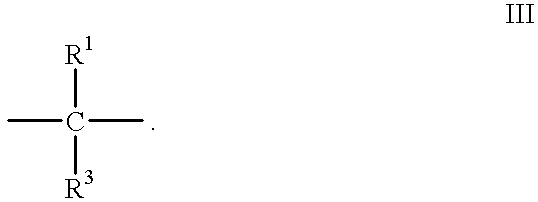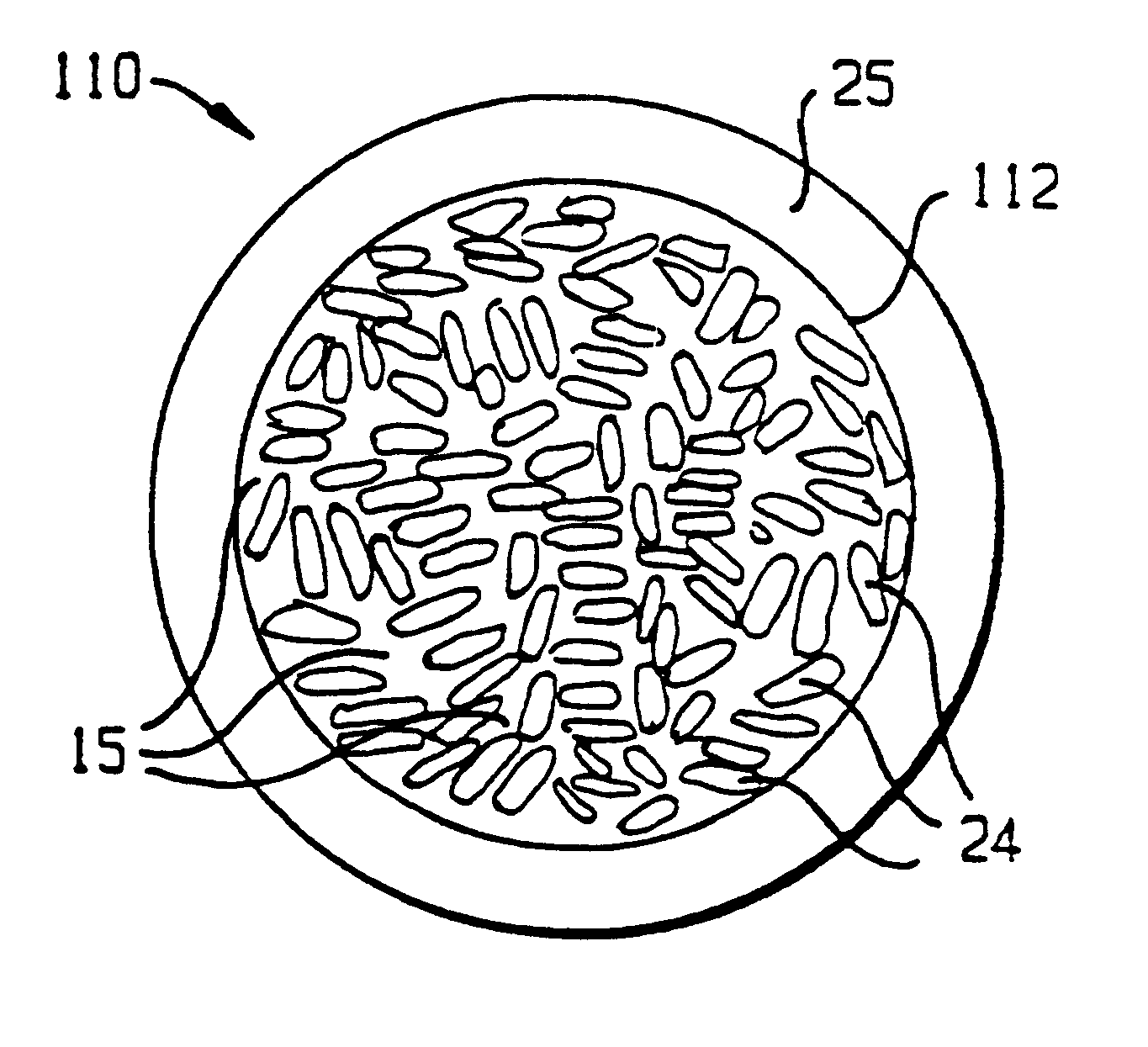Composite proppant, composite filtration media and methods for making and using same
- Summary
- Abstract
- Description
- Claims
- Application Information
AI Technical Summary
Benefits of technology
Problems solved by technology
Method used
Image
Examples
first embodiment
FIG. 1: a process for making composite particles of the present invention.
second embodiment
FIG. 2: a process for making composite particles of the present invention.
third embodiment
FIG. 3: a process for making composite particles of the present invention.
Twelve compositions were made to have the compositions listed in TABLE 3. The volume proportions refer to the finally cured "composite proppant" while the weights refer to the composition before granulation. The quartz sand ("Q" indicates quartz) have a SiO.sub.2 content>98.3%, fineness of grind, d.sub.50 =6 .mu.m and density of 2.63 g / cm.sup.3. The aluminum oxide (indicated by "A") has .gtoreq.99% Al.sub.2 O.sub.3, fineness of grind, d.sub.50 =7.5 .mu.m, and density of 3.96 g / cm.sup.3. A fluid phenol-formaldehyde resol resin (symbolized by "P") and a viscous resol resin (indicated by "F") were used as the synthetic resins, with water as the solvent. The phenol-formaldehyde resols, used in this process have a ratio between phenol:formaldehyde of 1:1.1 to 1:1.9. Typical ratios are around 1:1.2 to 1.5. The fineness of the quartz sand and other fillers also can be used in the range d.sub.50 =3-45 .mu.m.
Use of res...
PUM
| Property | Measurement | Unit |
|---|---|---|
| Linear density | aaaaa | aaaaa |
| Percent by mass | aaaaa | aaaaa |
| Angle | aaaaa | aaaaa |
Abstract
Description
Claims
Application Information
 Login to View More
Login to View More - Generate Ideas
- Intellectual Property
- Life Sciences
- Materials
- Tech Scout
- Unparalleled Data Quality
- Higher Quality Content
- 60% Fewer Hallucinations
Browse by: Latest US Patents, China's latest patents, Technical Efficacy Thesaurus, Application Domain, Technology Topic, Popular Technical Reports.
© 2025 PatSnap. All rights reserved.Legal|Privacy policy|Modern Slavery Act Transparency Statement|Sitemap|About US| Contact US: help@patsnap.com



